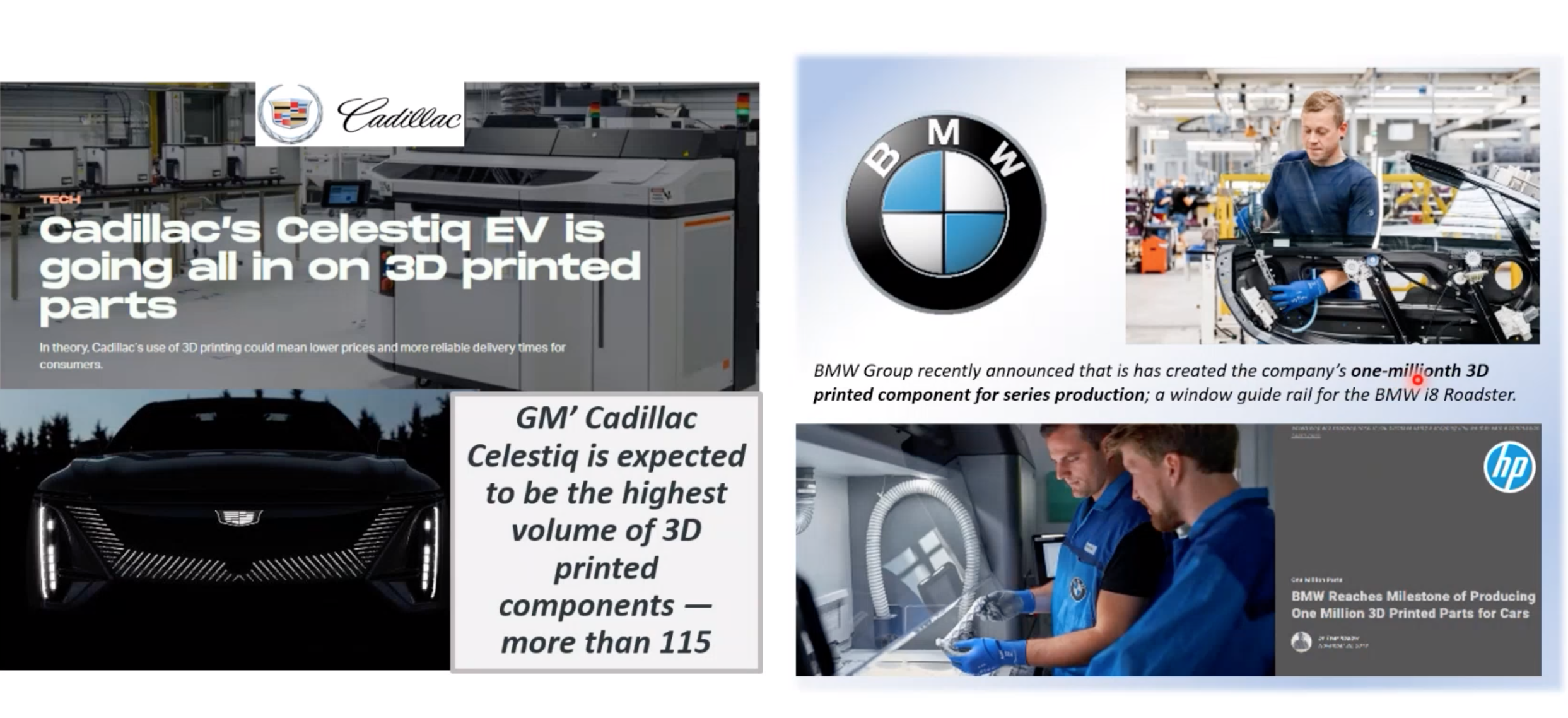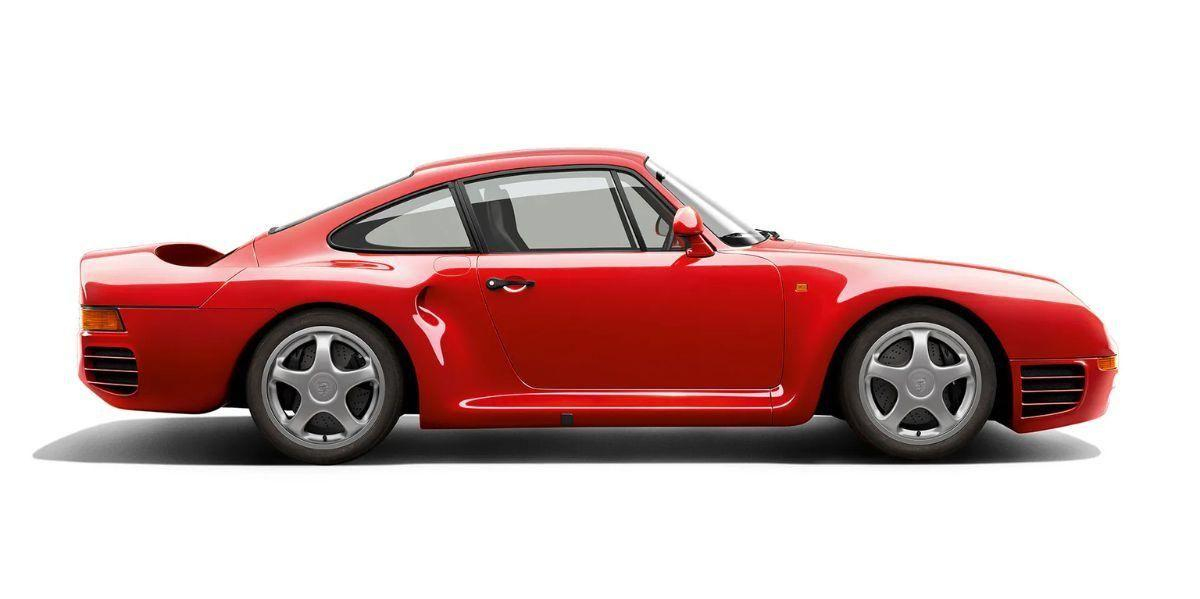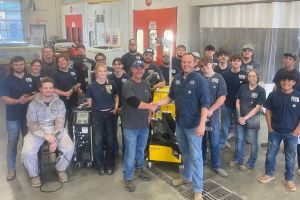The potential 3D printing brings to the auto industry is multifaceted and evolving. Among the benefits are reduction of parts pricing, innovation in production and potential supply chain solutions.
At this point, 3D tech faces problems like little regulation, but as solutions increasingly come into play, the prevalence of the technology will make more and more sense, Harold Sears, head of advisory council for Auto Additive, told a CIECA audience via webinar recently.
An Evolving Technology
Sears led off with an alternate term for 3D printing: additive manufacturing.
“It's really the process of creating a three-dimensional object from a digital file by laying down successive layers of material one at a time,” he said. “It's unlike traditional manufacturing technology … where you're removing materials … The good part of it is, in the end, there is actually very little waste in the process.”
The technology, he explained, has evolved from early days with it took significant time to manufacture just one part.
These were often “very fragile tight parts that could be broken or destroyed very easily,” he said.
 Screenshot from the presentation showing several OEMs' uses of 3D printing.
Screenshot from the presentation showing several OEMs' uses of 3D printing.
They’ve evolved now to parts that can be mass produced and are made of robust materials, and 3D printing is now a part of numerous car manufacturers’ processes from concept prototypes to production parts on customer-sellable vehicles.
Sears named a few companies that are using the technology, including Cadillac for shift patterns that top gear shift levers and performance parts printed in lightweight titanium to reduce weight.
Ford Motor Company, he said, is using a plastic brake line bracket, converted from metal, in the Shelby GT500. The redesign, he said, was a cost-saver. Ford also uses a 3D-printed metal wheel locking lug nut with a key pattern that can be randomly generated or customized for branding.
Sears also mentioned a polymer tool BMW uses to apply badging to vehicles. The tool, he pointed out, was previously made of heavier aluminum, was expensive and weighed more. The new one, he said, is significantly lighter and easier for operators to handle, making for less potential for damage to the vehicle during application.
“If you’re an operator on the line, you repeat this process over hundreds and hundreds of times a day,” he said. “So, if you can be given a tool that weighs several pounds less over those hundreds of times a day, you appreciate that a lot and tend to be happier with your job and do a better job with it, so I think this is a great application of tooling.”
Sears’ final example came from Porsche, which has approved the use of 3D printing of replacement parts in classic cars -- instances in which former supplier companies may be defunct.
“Applications have now been approved, and you can simply go to a website and order it, and it's 3D printed and shipped to you,” he said. “There's likely little to no inventory of this part sitting on shelves.”
Possibilities, Understanding and Regulation
3D printing has “enormous potential” to help with issues for the industry like supply chain blockages through manufacture of tools at home, but there’s also a “really big lack of understanding,” he asserted, regarding how the technology could impact the business.
That misunderstanding, he said, ranges from incorrect estimation of availability of materials to a low awareness of technologies.
“When you talk about these technologies … many people jump right away to the hobbyist printer -- the one that their son or daughter is using to do a robotics project with,” he said. “We use much more industrial-grade equipment than that.”
Regulation, he posited, also presents issues. Since this area remains “highly unregulated,” there are individuals printing parts on low-quality printers and selling them to repair shops. The next step for 3D printing tech is probably troubleshooting, but getting regulators on board and willing to invest in understanding and participation in that process has resulted in “dead ends” thus far, Sears said.
An industry task force effort to generate a framework for new businesses using 3D tech resulted in the founding of Auto Additive, which has produced 3D-printed applications like the push tool for bumper repair, a repair jig and several headlight tabs. The company has added players from several prominent companies to its advisory council, OEM manufacturers among them, to help in examining how 3D printing can impact the industry.
Among those potential impacts, Sears listed cost reduction, supply chain issue elimination, sustainability and quicker turnaround time for parts. Production of parts like headlight tabs, he pointed out, can up sustainability through reducing landfill waste. This use case, he said, can also save consumers and insurance companies significant money by preserving an expensive part.
“I think that the technologies are going to continue to improve, the materials are going to continue to improve and be more robust. As all of that starts to happen, it drives price down,” he said.
This is where quality control is important, though, according to Gerald Porier, a consultant with Vector Squared. Since consumers can currently purchase any grade part they wish in an unregulated environment, it’s important there is insurance certification or third-party verification for parts moving forward.
As quality evolves, Sears said, parts are approaching the integrity of their traditionally manufactured counterparts. He sees the timeframe in which repairers will be able to purchase 3D-printed parts as “very, very soon” and encouraged webinar attendees to watch the Auto Additive website for a list of supply chain partners.














